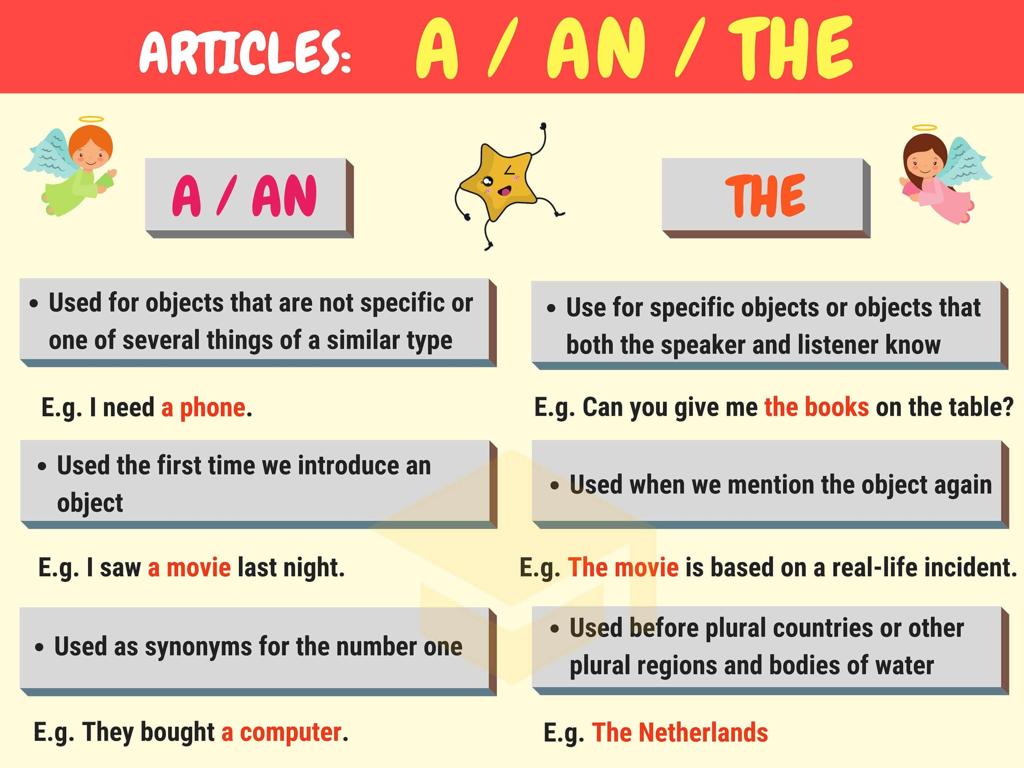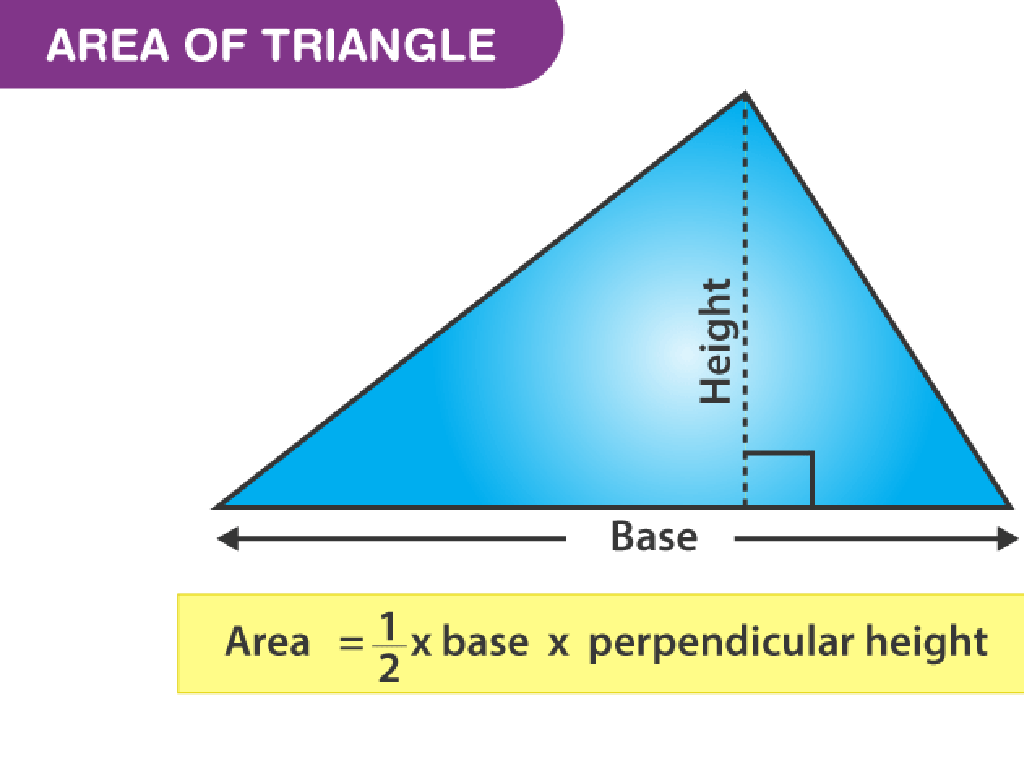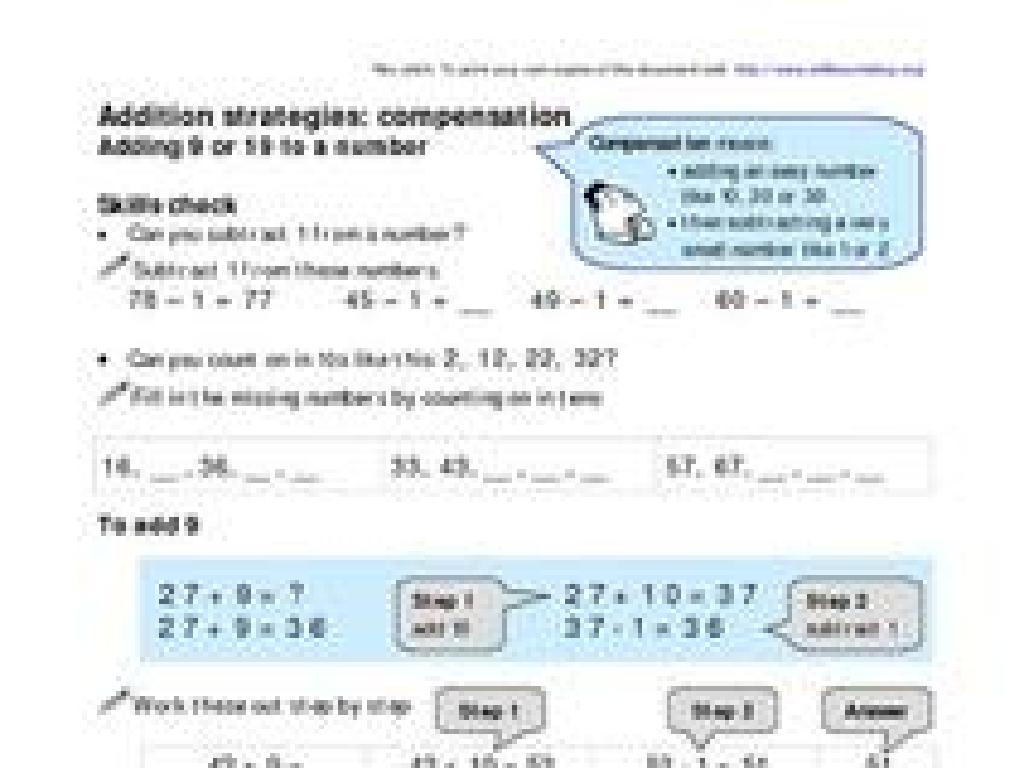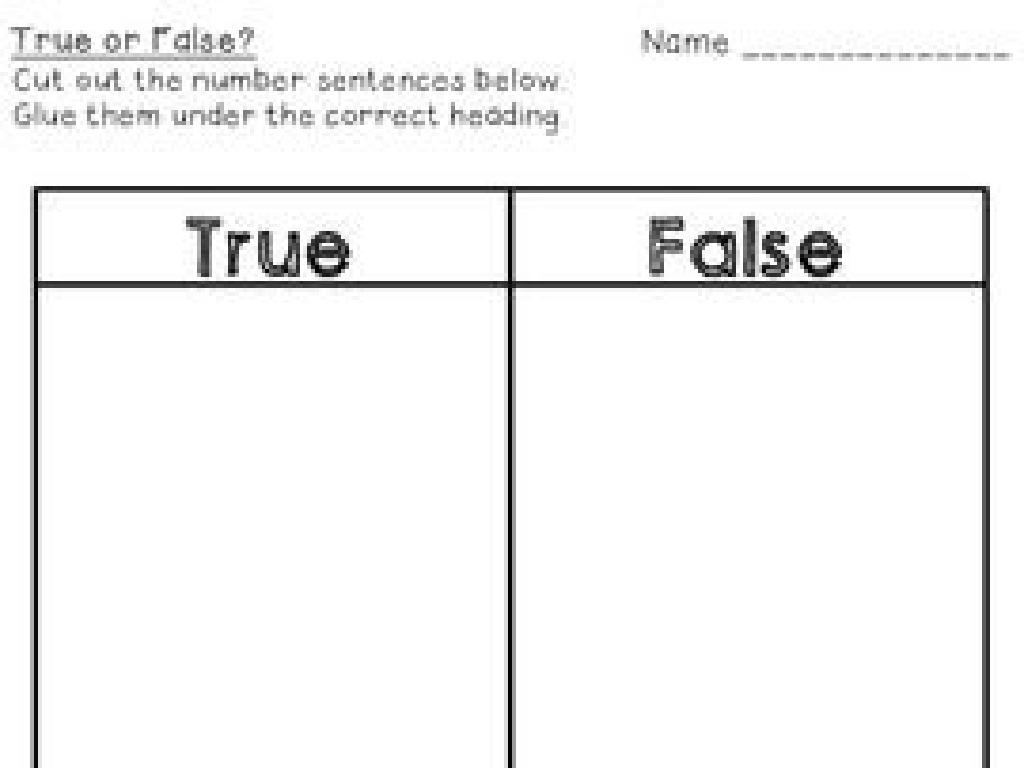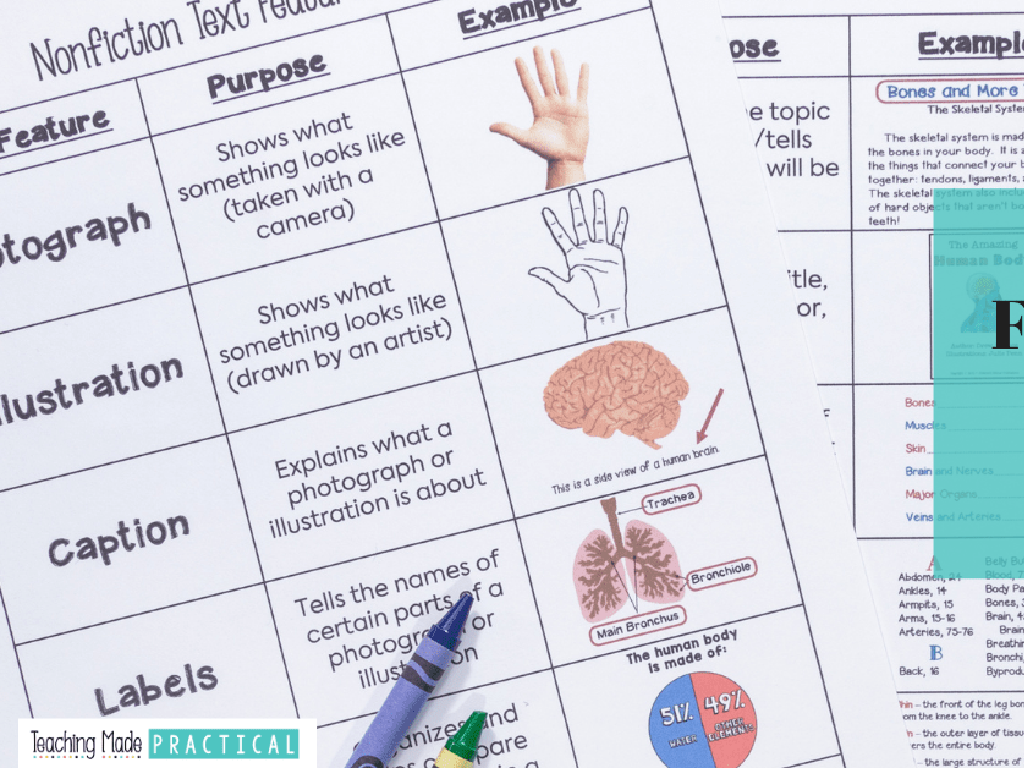Identify Mixtures
Subject: Science
Grade: First grade
Topic: Mixtures
Please LOG IN to download the presentation. Access is available to registered users only.
View More Content
Welcome to Mixtures!
– Good morning, class!
– Today’s topic: What’s a mixture?
– A mixture is when you combine two things but they don’t change into something new.
– Think about mixtures around you
– Maybe in the kitchen, like salad, or at the beach, like sand and shells.
– Let’s discuss our ideas together
– Share your thoughts, there’s no wrong answer!
|
Begin the class with a warm greeting to set a positive tone. Introduce the concept of mixtures in a simple and engaging way, encouraging the students to think about and identify mixtures they have encountered in their daily lives. Explain that a mixture is made when two or more things are combined, but they can still be separated because they don’t change into a new substance. Use relatable examples like a fruit salad or a bucket of sand and shells to illustrate the point. Prompt the students to share their own examples of mixtures, fostering a collaborative and open discussion. This will help them understand the concept of mixtures through familiar experiences.
What is a Mixture?
– A mixture combines things
– Like when you mix different toys
– Mixtures can be separated
– You can pick apart the pieces
– Example: Fruit salad
– Fruit salad has many fruits you can pick out
– Mixtures are everywhere
|
This slide introduces the concept of mixtures to first graders. Start by explaining that a mixture is made when you put two or more things together, just like when they mix different types of toys. Emphasize that the special thing about mixtures is that you can separate them back into the original pieces, like picking out blocks from a pile. Use the example of a fruit salad to illustrate a mixture they might be familiar with, where different fruits are mixed together but can still be picked out individually. Highlight that mixtures are found everywhere in daily life, from the playground to the kitchen. Encourage the students to think of other examples of mixtures they have seen or made.
Mixtures All Around Us
– Mixtures are everywhere
– Think of mixtures you’ve seen
– Did you see a fruit salad or a box of crayons?
– Let’s list known mixtures
– We can list things like muddy water or a bowl of cereal
– Understanding mixtures in daily life
– This helps us see how many things are mixtures
|
This slide is aimed at helping first graders recognize and understand mixtures in their environment. Start by explaining that a mixture is when two or more things are combined, but they do not change into something new and can usually be separated. Encourage the students to think of and discuss mixtures they encounter in their daily lives, such as a box of assorted crayons or a fruit salad, to make the concept relatable. List examples on the board as students share them. This interactive approach will help students identify mixtures and understand that they are a common part of their surroundings.
Identifying Mixtures
– What is a mixture?
– A mixture has different things mixed together.
– Spotting different things together
– Like a salad with fruits and veggies!
– Sorting objects activity
– We’ll sort items to find mixtures.
– Mixtures vs. Non-mixtures
|
This slide introduces the concept of mixtures to first graders. Begin by explaining that a mixture is made when two or more different things are put together but can still be separated. Show examples of mixtures like a fruit salad or a box of assorted toys. Then, engage the students in an activity where they sort a set of objects into mixtures and non-mixtures. For example, a bag of marbles of different colors is a mixture, but a pile of the same type of blocks is not. This activity will help solidify their understanding of mixtures in a fun, interactive way. Encourage the students to ask questions and discuss why they think an object is a mixture or not.
Let’s Make a Mixture!
– We will create mixtures today
– Use cereal, raisins, nuts for trail mix
– Think of your favorite snacks to mix
– Mixtures can be separated
– Like taking raisins out of the trail mix
– Have fun making and separating!
– Enjoy the activity and learn about mixtures
|
This slide is for a fun and interactive class activity where students will learn about mixtures by making their own trail mix. Explain to the students that a mixture is made when two or more things are combined, but they don’t change into something new and can be separated back into the original components. Provide a variety of ingredients like cereal, raisins, and nuts, and let the students choose what they want in their trail mix. After the activity, discuss how each item in the trail mix can be picked out, demonstrating that they were mixed but not permanently combined. This hands-on experience will help solidify the concept of mixtures in a tangible and memorable way.
Class Activity: Mixture Scavenger Hunt
– Let’s start our scavenger hunt!
– Look around the classroom carefully.
– Find items that are mixtures.
– Mixtures are things made of two or more materials, like cereal with fruits!
– Show and tell the class what you found.
|
This activity is designed to help students identify mixtures in a fun and interactive way. Before starting, explain that a mixture is made when two or more things are combined, but they do not change into a new substance. Give examples of mixtures they might find, such as a box of crayons (different colors mixed together), a bag of mixed snacks, or a jar with different kinds of coins. Encourage students to look for items that have different parts that can be seen or separated. After the scavenger hunt, have each student present their item and explain why it’s a mixture. This will reinforce their understanding and allow them to learn from each other’s findings.
Review: What Are Mixtures?
– Mixtures combine two or more items
– Like sand and shells, or cereal and milk
– Items in mixtures can be separated
– Like picking out raisins from cereal
– We explored and created mixtures
– Understanding mixtures is fun!
|
This slide is a recap of the day’s lesson on mixtures, aimed at reinforcing the concept for first-grade students. Start by reminding them that a mixture is when you put two or more things together, which they can see and touch. Give examples like a bag of mixed candies or a fruit salad. Emphasize that the items in a mixture are not joined permanently and can be separated, such as removing toys from a box of sand. Reflect on the activities done in class where students found examples of mixtures around them and even got to make their own, like mixing different colored clay or creating trail mix. This helps solidify their understanding through hands-on experience. The goal is to ensure students can identify and understand mixtures in their everyday lives and recognize that science is part of their daily experiences.
Goodbye and Great Job!
– Amazing job learning about mixtures!
– Share with your family what you learned
– Explain mixtures to your family like we did in class
– Tell them about the mixtures we made
– Describe the mixtures from our class activities
– Excited to see you for more science fun!
|
This slide is meant to conclude the lesson on mixtures and celebrate the students’ achievements. Encourage the children to discuss what they’ve learned with their families, reinforcing their understanding of mixtures. Prompt them to describe the mixtures they created during class, which will help solidify their knowledge and build communication skills. Looking forward to the next class, instill excitement for continuing their scientific exploration. As a teacher, be prepared to suggest some simple mixtures they might find at home, like fruit salad or trail mix, to discuss with their families.

